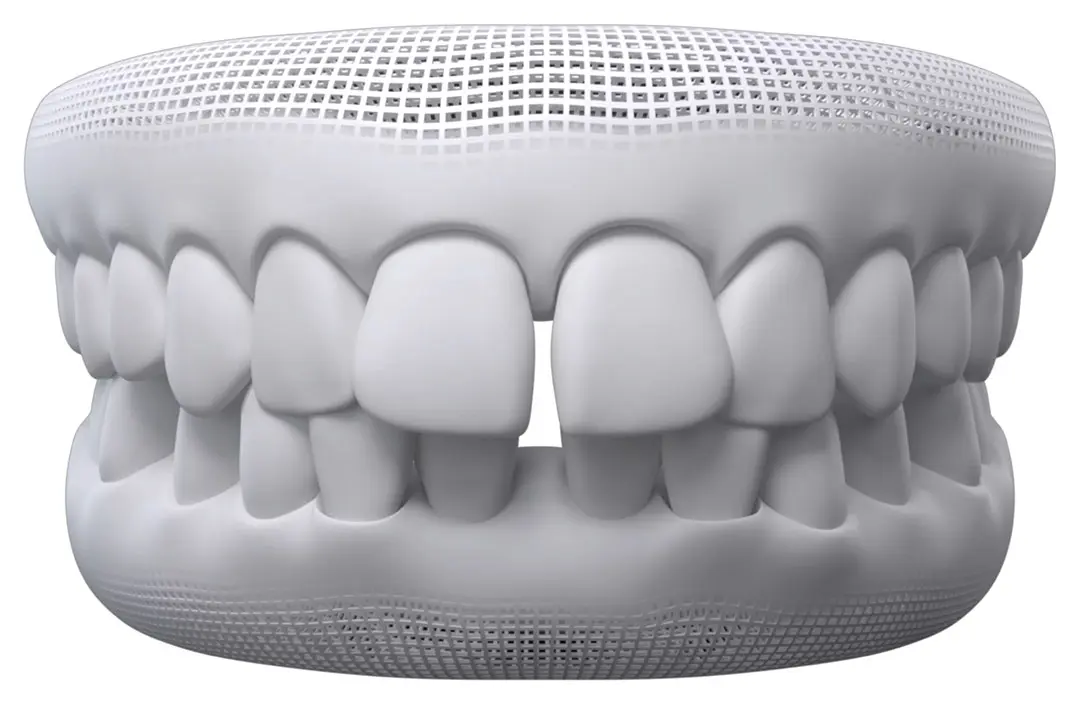Gap Teeth

Gap teeth and how to fix gap in teeth
Gap teeth, called diastema, are extremely common. Some consider a gap between their teeth to be their signature feature. But, for others, spaced teeth can cause aesthetic concerns or even signal an underlying problem if the gap between teeth is getting bigger.
The good news is that with a treatment process such as the Invisalign system, you could fix gaps in teeth and unlock your best smile.
What are gap teeth?
Diastema (gap teeth) is a space or gap between two teeth. The gap commonly appears between the two upper front teeth, but spaces can form between any two teeth in the mouth. Gap teeth are a type of malocclusion (misalignment of the teeth and bite). Other common malocclusions include overbites, underbites, crossbites, crooked teeth, crowded teeth and overlapping teeth.
Gap teeth causes
Gap teeth form for many reasons. Whether you’ve had them since you can remember or you’ve just started to notice them, be sure to get your gap teeth checked by a qualified doctor.
Common causes of gap teeth
Inherited gap teeth
If gap teeth run in your family, you may be genetically predisposed to them, too.
Natural development
Up to 97% of children have spaces between their baby teeth and most close naturally once the permanent teeth grow.
Missing, extra or undersized teeth
Some children are born with missing/undersized baby or adult teeth, which leaves a gap. In rare cases, extra teeth in the bone can prevent the eruption of other teeth, causing gap teeth.
Oversized labial frenum
Put your tongue between your front teeth and lip, and then reach the upper part of your mouth. The tissue you feel in the middle is your upper labial frenum. When oversized, this tissue can cause a gap between the front teeth.
Jaw and teeth size mismatch
An imbalance between the size of the teeth and jaw bones (either too big or too small) can cause a gap in your teeth or teeth crowding.
Swallowing reflex problems
Some people develop a swallowing reflex known as tongue thrusting where the tongue pushes against the front teeth (instead of the roof of the mouth). This may cause the front teeth to move over time, resulting in gap teeth.
Thumb sucking
Prolonged habits such as thumb sucking can pull the front teeth forward, creating space between your teeth.
Gap teeth symptoms and complications
-
In most mismatched teeth and jaw cases, gap teeth symptoms are aesthetic, sometimes resulting in self-consciousness when smiling.
-
A big gap between front teeth may not leave enough room for neighbouring teeth to come through, causing bite problems.
-
In some cases, the build-up of plaque deposits between spaced teeth can lead to dental issues such as tooth decay, bad breath (halitosis) and even tooth loss.
How to fix gap teeth
How to get rid of gaps in teeth depends on the cause, size and severity of your front tooth filling requirements. It also depends on your budget/the cost and whether you’re looking for a quick fix or long-term solution.
Your doctor will advise which closing the gap dental service is right for you. Use our easy search tool to find a qualified doctor near you.
Available gap teeth treatment methods
Dental bonding
If your doctor recommends orthodontics to correct the gap between two teeth, it’s important to remember that moving these teeth may create gaps between your other teeth. Therefore, in most cases, you’ll need to wear a full set of orthodontics. Your treatment provider will be able to discuss the implications and treatment options with you. While some opt for braces as their gap between teeth treatment, Invisalign clear aligners may be one of the best ways to close gaps in teeth because they negate the need for noticeable metal wire across the gap. The Invisalign treatment has many other benefits vs traditional braces to close teeth gaps.
Missing tooth replacement
In instances where the gap is caused by a missing tooth, your dentist can insert a dental implant as an effective tooth gap filling.
Dental Bonding
Tooth bonding for gaps is a quick solution that’s ideal for tiny gaps between teeth or if a chipped tooth is the cause. The dentist bonds tooth-colored resin to the tooth using UV light. This treatment is often not as strong or as long-lasting as others to fix gaps in teeth.
Porcelain veneers
Veneers are a little wider than your teeth and may be suitable to fix small teeth gaps. Dentists match the veneer to your tooth color and then remove a thin layer of enamel from your teeth so the veneer bonds like a mask.
Dental surgery
If the cause of your gap teeth is a large labial frenum, you may need a frenectomy (surgery) to remove it, followed by appropriate treatment such as the Invisalign system.
How to fix gap teeth naturally
Can you close a gap without braces? Can teeth gaps close naturally? The answers depend on what’s causing your gap teeth. Most children’s spaced teeth will close naturally, but a gap between teeth is more likely to stay if it’s present after their adult teeth have erupted.
If gap teeth appear in adults, they may need treatment.
Can Invisalign treatment fix gap teeth?
Yes, it can. Closing gap front teeth with the Invisalign system is extremely popular due to the metal-free aesthetics of our clear aligners. The treatment process may vary, depending on the cause, size and location of your gap.
In cases where there’s a big gap in front teeth, Invisalign clear aligners may be used in conjunction with bonding or veneers to close the gap fully.
Braces vs Invisalign treatment for fixing gap in teeth
Compared to braces, Invisalign aligners are less painful and more comfortable than braces. They also work faster and provide better oral hygiene than braces.
Start by taking the Invisalign Smile Quiz
If you’re concerned about how to fix a gap in your teeth, take the Invisalign Smile Quiz to see if you’re a good candidate for Invisalign treatment. Then, use our easy search tool to find a doctor near you or request an appointment with our Invisalign Smile Concierge team for assistance.
Our Doctors’ Affiliations










